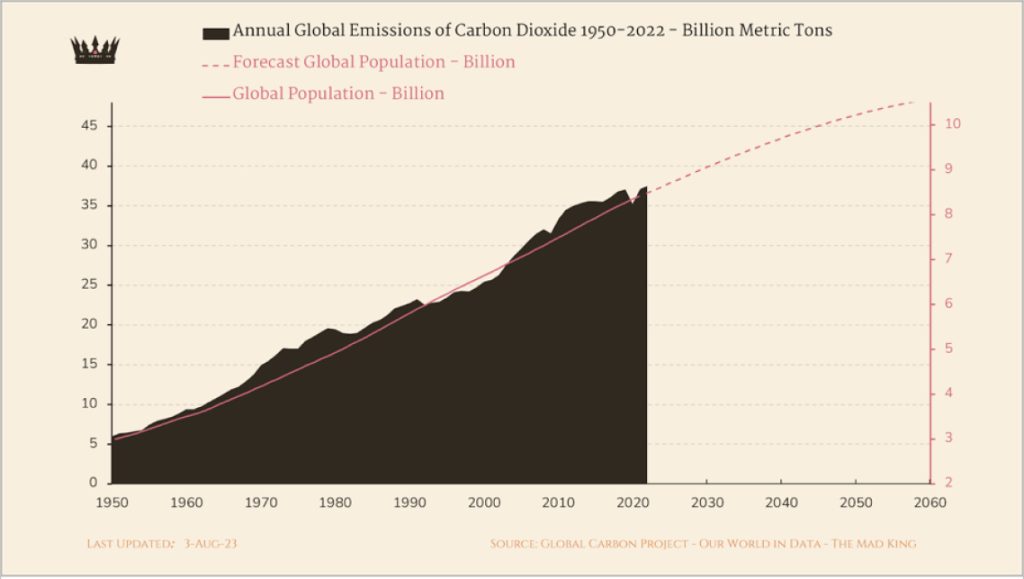

Bearing all these points in mind, the rationale of the Inflation Reduction Act, America’s contribution to solving the problems of energy transition is to:
The amount of capital being incentivized is vast, which is why the government has opened up a new investor class – tax-exempt investors – to shoulder part of the challenge.
The following charts are extracted from an insightful publication that has emerged in the last year: The Mad King (TMK). TMK has been kind enough to permit the reposting of the charts. They represent a subset of the total data set recently set forth in an article entitled “Smoke and Mirrors”.
Anyone interested in reading the entire publication should reach out through the contact section of the website (Dakota Ridge Capital).
Overall population growth is interesting, but…

…much more interesting when broken down by region.

The correlation between population growth and CO2 emissions is clear,

as is the breakdown of emissions by region, both in billions of metric tons

and as a percentage of total emissions.

The temptation to see Asia as culpable in driving CO2 emissions is strong but needs to be set in the context of a global trade bargain in which the developed world has outsourced a large portion of the manufacturing it preferred not to do onshore to Asia, which has produced a similarly large portion of the manufactured goods imported by developed economies.
Developed economies have, of course, benefited in their growth trajectory from the widespread use of cheap, efficient, and energy-dense fossil fuels. It is only in the relatively recent past that they have begun to realize the detrimental impact of increasing CO2 emissions and to catalyze spending on technologies to transition to a less carbon-intensive energy production model.

2022 illustrates the primary focus of this spending has been on renewable energy and electrified transportation. Electrified transportation will be the focus of a subsequent post.

The chart below illustrates very clearly that the weighting of spending is towards China, which also happens to be a big driver of fossil fuel new construction.

What is sadly apparent, but not surprising, is the very small contribution to overall energy consumption that is represented by renewable energy.

Equally sad and equally unsurprising is the share of CO2 emissions represented by those energy sources that represent the vast majority of energy consumed.

The commitments made to renewable energy are massive compared to the share they currently provide.

It is perhaps not surprising that the developed world is beginning to realize that the timeframe of the commitments that have been made is overly ambitious and that the capital required to meet those commitments may need to be raised and invested more gradually than has been advertised. The government of Rishi Sunak in the UK has taken heat for starting this conversation.

The importance of an effective and successful energy transition cannot be overstated. However, it needs to be affordable in the broadest sense if it is to continue to command the political support it needs. Pressing the pace too fast and committing un-raisable amounts of capital can only serve to polarize opinions on the entire energy transition thesis.
It is also clear – and the Inflation Reduction Act’s support for nuclear is a clear signal here – that the world is not likely to complete the necessary energy transition without fully embracing nuclear power. It is instructive to see that Microsoft has begun the process of installing small modular nuclear reactors at its data centers.
More to follow…